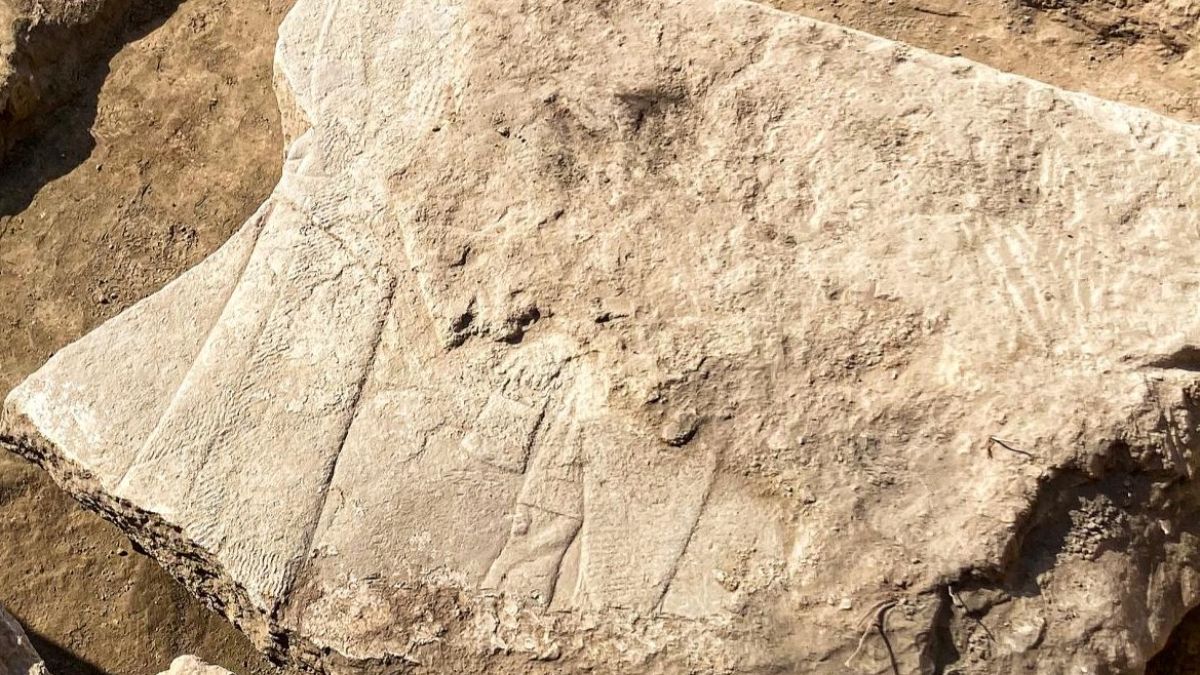German archaeologists have made a spectacular discovery in Iraq. During excavations in the ancient metropolis of Nineveh, a team from Heidelberg University came across large parts of a monumental relief. It shows King Assurbanipal (668 to 627 BC), the last ruler of the Assyrian Empire, accompanied by two important deities and other figures.
The relief was found in the throne room of the North Palace. It was carved on a massive stone slab measuring 5.5 metres in length and three metres in height and weighs around twelve tonnes.
The find is extraordinary for the scientists not only because of its size, but also in terms of what the relief shows: “Among the numerous relief depictions of Assyrian palaces known to us, there is no depiction of the great deities,” emphasises Prof. Dr Aaron Schmitt from the Institute of Prehistory and Early History and Near Eastern Archaeology. Schmitt is in charge of the excavations in the North Palace.
King Assurbanipal is at the centre of the relief that has now been discovered. He is flanked by two high deities: the god Assur and the city goddess of Nineveh named Ištar. These are followed by a fish genius, who bestows salvation and life on the gods and the ruler, as well as a supporting figure with raised arms; presumably a scorpion man.
“These figures suggest that a giant winged sun disc was originally placed above the relief,” explains Schmitt. Based on the data collected on site, the scientists will analyse the finds in the coming months and publish the results in a scientific journal.
The relief originally stood in a wall niche opposite the main entrance to the throne room, i.e. in the most important place in the palace, according to Schmitt. The Heidelberg researchers discovered the fragments of the relief in a pit filled with earth. It was probably created in Hellenistic times in the third or second century BC.
“The fact that the fragments were buried is certainly one of the reasons why the British archaeologists did not find them more than a hundred years ago,” surmises Schmitt.
At the end of the 19th century, British researchers had already examined the northern palace of ancient Nineveh for the first time and discovered large reliefs, which are now on display in the British Museum in London.
It is unclear why the relief was buried. Schmitt points out that there is a lack of information about the Hellenistic settlement in Nineveh: “We don’t know whether they had a negative attitude towards the Assyrian king and the Assyrian gods,” he told the science portal “Live Science”. “I hope that our future excavations will give us a clearer picture.”
Ancient Nineveh is considered one of the most important cities in northern Mesopotamia and developed into the capital of the Assyrian empire in the late eighth century BC under King Sanherib (705 to 680 BC). It was located on the left bank of the Tigris, at the mouth of a small tributary within the modern city of Mosul.
Aaron Schmitt and his team have been conducting research on Kuyunjik Hill in the core area of the northern palace built by King Assurbanipal since 2022. The excavations are part of the Heidelberg Nineveh Project launched in 2018 under the direction of Professor Stefan Maul from the Department of Near Eastern Languages and Cultures at Heidelberg University.
In consultation with the State Board of Antiquities of Iraq (SBAH), the plan is to return the relief to its original location in the medium term and make it accessible to the public.
Additional sources • Ruprecht-Karls-Universität Heidelberg
Read the full article here


